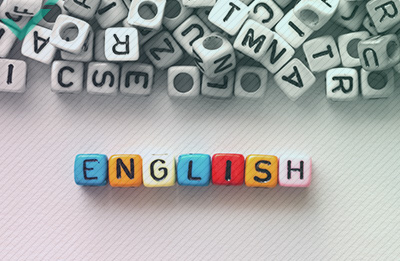WHAT IS NATIVE ADVERTISING?
Successful native advertising campaigns are, in essence, an anti-advert strategy. By design, natural, organic, and integrated advertising goes against the stereotypical and outlandish approach of pop-ups, banners, and flash promotions.
Put simply, native advertising is the use of paid ads that match the needs of the customer. Not only that, but they integrate seamlessly with virtually all platforms. One area that native ads have excelled in is social media. Scroll through Facebook, and chances are you’ll be met with adverts integrated right into your newsfeed. And, if the promotional strategy is working, they should be products tailored to your online activity. Native advertising can also appear as sponsored search results and personalised content recommendations.
Native advertising should not, at first glance, seem like an advert for it to be truly effective. However, not all native advertising strategies are created equal. Before we detail a foolproof list of native advertising dos and don’ts, it’s worth understanding why industry giants like Google favour this tactic in the first place.

IS NATIVE ADVERTISING REALLY SUPERIOR?
Since the birth of the internet, near-infinite access to new customers has driven a practice of adverts at every turn—regardless of their purpose, suitability, or effectiveness. Slowly but surely, advertisers have realised that the return on investment (ROI) of traditional methods simply isn’t worth it. Instead, they see the answer as native advertising—but why?
The first and most immediate benefit of native advertising is that it can be used virtually anywhere. Social media is an excellent candidate, but so too is mobile-specific content and videos. A combination of all three can help brands appear genuine, connecting with customers on a level that traditional methods cannot match. The second benefit of native advertising is that it fits within the content, rather than obstructing it.
The lack of disruption to the consumer brings us to native advertising’s final benefit: it’s fantastic for all parties involved. Advertisers can experience higher levels of engagement, publishers can expect a favourable ROI, and adverts no longer impede the consumer. Instead, content flows in a way that is part of the customer journey.
HOW DOES NATIVE ADVERTISING COMPARE ON AN INTERNATIONAL STAGE?
North America
Cracking the art of native advertising is essential as generations young and old become increasingly desensitised to online advertising—none more so than in the nation where Facebook and Twitter were originally developed. A 2018 Deloitte advertising survey found that 80% of adults in North America use at least one type of ad-blocking software. They have become tired of seeing the same old approach to digital advertising.
Encouragingly, native advertising appears to be turning the tide on a disenchanted American public. Business Insider predicts that by 2021, “in-feed ads on publisher properties and social platforms, will make up 74% of total US display ad revenue”.
Europe
While forecasts aren’t as favourable as American markets, European nations such as Germany, the United Kingdom, and France have all experienced significant growth in their native advertising revenue. The introduction of the General Data Protection Regulation (GDPR) does make native advertising more challenging to create and implement. However, it can still be done—provided companies are clear about the customer information they’re collecting.
The extra steps required for European markets are more than worth it. The native advertising market share in the UK continues to rise year over year, while France experienced a boom in 2016. In Spain, research carried out on behalf of the IAB found that half of all advertisers were implementing branded and native campaigns. In short, native advertising is a growing revenue stream, no matter where in the world you are.

HOW TO CREATE A FOOLPROOF NATIVE ADVERTISING CAMPAIGN
We’ve set the scene for native advertising, so it’s only right that we talk through some of the steps a successful campaign should encompass.
1. TELL A STORY
Tailoring advertising to a customer demographic is more than just picking a product they’re interested in—it’s about telling a compelling story. That story, of course, needs to involve the target consumer and your product or service. From the moment they click on an advert all the way to checkout, every effort needs to be made to reassure the customer that your product or service is the right one for them.
Native adverts should kindle interest, but not lead with a hard sell. A combination of audio and video can tell an engaging story in far less time than imagery alone, and helps prevent customers from moving on before a successful conversion.
2. AUTHENTICITY IS CRUCIAL
How many times have you seen taglines such as “deal of the century” or “our best sale ever”. In the majority of cases, these claims never quite live up to expectations, and consumers know it. Integrity and authenticity should be at the heart of any marketing campaign.
If native advertising has been utilised effectively, there is no need to make outlandish claims your product or service cannot live up to. And ultimately, any unsubstantiated features will come back to haunt you, damaging customer confidence and consequently your brand’s image. Develop a personal approach that communicates with the customer, not at them.
3. UNDERSTAND YOUR CUSTOMER
Chances are you already have a pretty good understanding of your target demographic; however, how well do you really know your customers? Native advertising relies on creating scenarios that your product or service can solve. However, to do that, you need to know the customer inside and out. Regardless of whether you are B2B or B2C-focussed, it pays to build a fully comprehensive customer profile.
4. TEST, ANALYSE, AMEND
By now, testing, analysing, and tweaking marketing materials should be a fundamental practice. If it isn’t, it’s never too late to start by monitoring different channels, taglines, content feeds, and headlines. Ask yourself, which ones were most successful? A native advertising campaign that works on Facebook may not have the same impact on Twitter or Google.
With every marketing campaign, keep a log of successful strategies and continue to fine-tune them. And, if the budget allows, don’t forget to employ the help of third-party experts who can give you structured and detailed feedback on how your campaign is performing.
5. QUALITY OVER QUANTITY
The phrase “less is more” couldn’t be more accurate for native advertising. Remember, the goal is to create organic adverts that complement the customer journey, not stop it in its tracks. A well-researched, expertly implemented, and continually reviewed campaign, no matter how small, will undoubtedly perform better than bombarding every platform possible with sale banners.
Take the time to trial native advertising on a small selection of platforms before expanding your reach. Once you know what resonates with your customers, each implementation will be quicker, smoother, and ultimately more profitable.
NATIVE ADVERTISING: THE FUTURE OF DIGITAL MARKETING?
It’s hard to deny the growing trend (and revenue return) of native advertising, but that doesn’t mean every campaign will be a success. Alongside the steps outlined above, it’s crucial to consider several other facets. If you plan on expanding internationally, your native advertising strategies need to take into account variables like cultural nuances and appropriate transcreation in order to be successful.
Together, these elements can turn the tide on customer desensitisation to digital marketing, propelling your business forward.


